Intermediate English
El 17 de enero de 1994, un terremoto de magnitud 6,9 cerca de Northridge, California liberó energía equivalente a casi 2 millones de kilogramos de alto explosivo. El terremoto produjo la muerte de 51 personas, causando más de 20 millones de dólares en daños, y levantó las montañas de Santa Susana al norte de Los Ángeles unos 70 centímetros. También generó ondas sísmicas que rebotaron en todo el interior de la Tierra y se registraron en los observatorios geofísicos de todo el mundo. Las trayectorias de algunas de esas ondas sísmicas y el movimiento de tierra que causaron se muestran en este cartel. Los sismólogos utilizan estos registros para explorar las profundidades de la Tierra.

“What’s Inside the Earth?" is an interactive digital poster designed to engage learners in exploring the vital role seismic waves play in determining the composition and structure of Earth's interior.
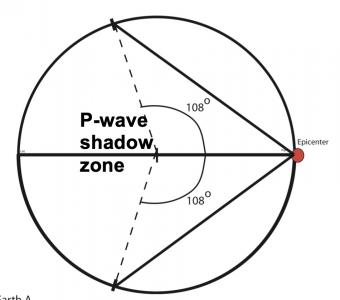
Students work first in small groups, and then as a whole class to compare predicted seismic wave travel times, generated by students from a scaled Earth model, to observed seismic data from a recent earthquakes. This activity uses models, real data and emphasizes the process of science.
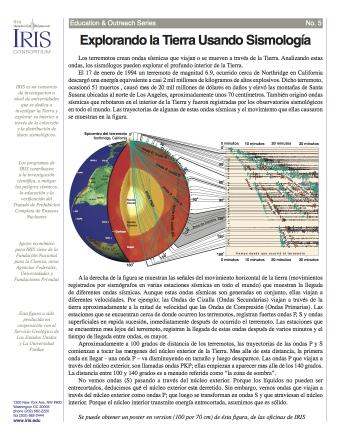
Los terremotos crean ondas sísmicas que viajan o se mueven a través de la Tierra. Analizando estas ondas, los sismólogos pueden explorar el profundo interior de la Tierra. Esta ficha técnica utiliza los datos provenientes del terremoto de magnitud 6,9 en las cercanías de Northridge, California para ilustrar tanto este proceso como la estructura interior de la Tierra.
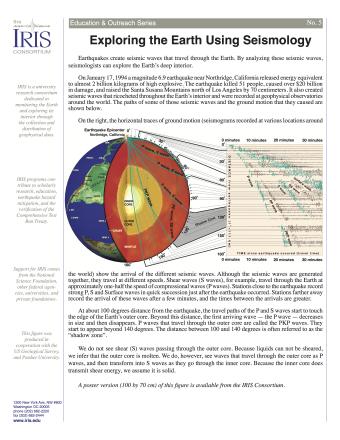
Earthquakes create seismic waves that travel through the Earth. By analyzing these seismic waves, seismologists can explore the Earth's deep interior. This fact sheet uses data from the 1994 magnitude 6.9 earthquake near Northridge, California to illustrate both this process and Earth's interior structure.
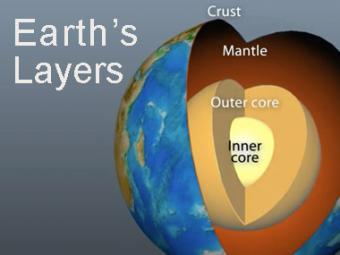
The Earth has 3 main layers based on chemical composition: crust, mantle, and core. Other layers are defined by physical characteristics due to pressure and temperature changes. This animation tells how the layers were discovered, what the layers are, and a bit about how the crust differs from the tectonic (lithospheric) plates, a distinction confused by many.
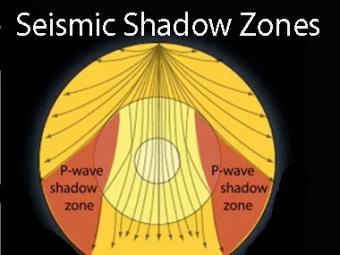
Seismic shadow zones have taught us much about the inside of the earth. This shows how P waves travel through solids and liquids, but S waves are stopped by the liquid outer core.
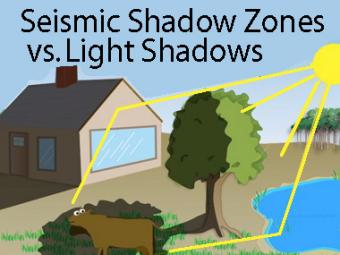
The wave properties of light are used as an analogy to help us understand seismic-wave behavior.
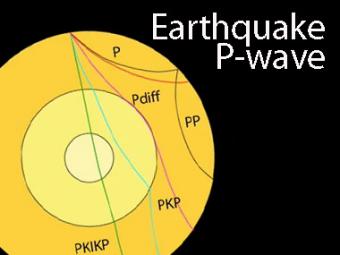
The shadow zone is the area of the earth from angular distances of 104 to 140 degrees from a given earthquake that does not receive any direct P waves. The different phases show how the initial P wave changes when encountering boundaries in the Earth.
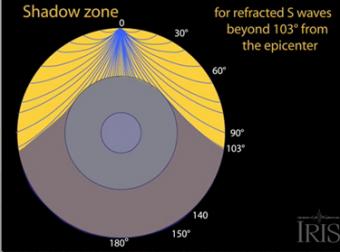
The shadow zone results from S waves being stopped entirely by the liquid core. Three different S-wave phases show how the initial S wave is stopped (damped), or how it changes when encountering boundaries in the Earth.
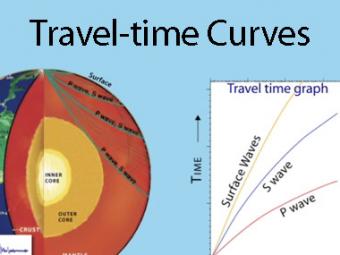
A travel time curve is a graph of the time that it takes for seismic waves to travel from the epicenter of an earthquake to the hundreds of seismograph stations around the world. The arrival times of P, S, and surface waves are shown to be predictable. This animates an IRIS poster linked with the animation.
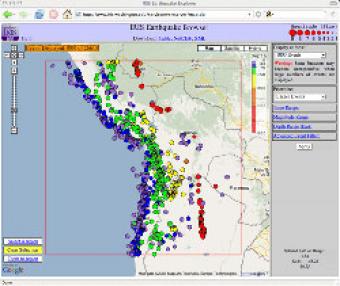
The IRIS Earthquake Browser (IEB) is an interactive tool for exploring millions of seismic event epicenters (normally earthquakes) on a map of the world. Selections of up to 5000 events can also be viewed in 3D and freely rotated with the 3D Viewer companion tool.
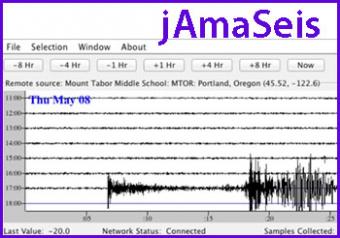
jAmaSeis is a free, java-based program that allows users to obtain and display seismic data in real-time from either a local instrument or from remote stations.
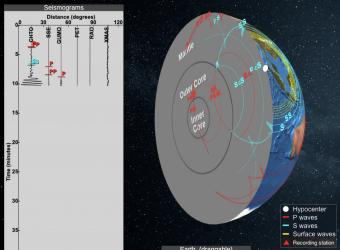
Seismic Waves is a browser-based tool to visualize the propagation of seismic waves from historic earthquakes through Earth’s interior and around its surface. Easy-to-use controls speed-up, slow-down, or reverse the wave propagation. By carefully examining these seismic wave fronts and their propagation, the Seismic Waves tool illustrates how earthquakes can provide evidence that allows us to infer Earth’s interior structure.
We encourage the reuse and dissemination of the material on this site as long as attribution is retained. To this end the material on this site, unless otherwise noted, is offered under Creative Commons Attribution (CC BY 4.0) license